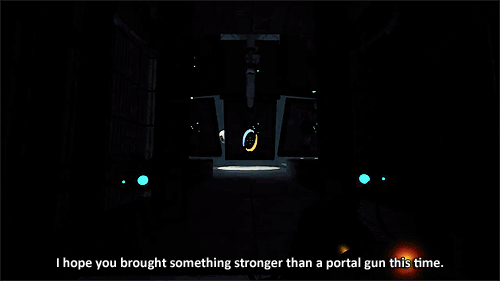
Physics is often something that is heavily considered in video game development and can either be embraced of disregarded. A common example of physics in gaming is when the character jumps from a high height. This is usually tackled by developers in one of three ways.
Either the jump does nothing, like in Super Mario Brothers. No matter the jump, Mario keeps progressing in the same way.

Other games, such as The Legend of Zelda and Xenoblade Chronicles series, have the character stagger and even lose health when they do such a thing.

However, when I was considering physics in video games there was one game that came to the forefront: Portal. Portal is a puzzle game that puts you in the mindset of Chell, a woman who is being lead through a testing facility by the AI GLaDOS and has to solve a series of puzzle rooms with the use of a portal gun, with the incentive of cake (spoiler alert: the cake is a lie).
Anyway, while you never really see the character in the game, when you make your first jump off a high platform GLaDOS comments that it's a good thing you have your aptly named "long fall boots" on. So not only did the developers decide to acknowledge the fact that from fall from great heights would shatter human legs, but they designed an explanation for how to allow the character to do so. As you can see, the boots have a flexible plastic-y heel so that when Chell hits the ground, most of the force is place there first, and it takes longer for her actual feet and legs to feel the impact. Thus by delta p = Ft, her body wouldn't feel as much force allowing her to keep going.



Then as I got to thinking about it more and more, the entire game of Portal kind of revolves around a basic understanding of physics. As I mentioned before, Chell is equipped with a portal gun, which shoots one blue and one orange portal. Entering one portal will result in you exiting the other portal.

You are expected to use these portal to solve puzzles, usually you being in a room in which you have to make it to the exit. For example a simple room would be when the door is across from you, but across a gap that is too big to jump. The main issue is that you need to have a greater speed when crossing the gap than you would just by jumping. The solution? Place one portal on the ground and the other on the wall above your start position. By jumping into the first portal, you carry over the momentum gained by from your gravitational potential energy into horizontal kinetic energy, enough to take you across the gap.
Here's an example of a slightly more complicated puzzle.

Regardless, the game requires you to think about your speed, momentum, and vectors every time you go about solving a room. Self-propulsion is the primary mechanic. However there is one physics princple that the game does defy and that is the conservation of energy. This is because you can create a portal say on a ledge 15 ft above you, and one right next to you, walk through it and suddenly you've gained potential energy without a loss of kinetic or influence of an outside force. But unless you really know about physics this never really comes up.
Portal is one of my favorite games as it is challenging in a way that doesn't require a lot of video game skill, just an understanding of everyday physics. It's also a hilarious game. 10/10 would recommend.

Below is a video demonstrating just some of the cool stuff you can do:
Portal Demonstration
No comments:
Post a Comment
Note: Only a member of this blog may post a comment.